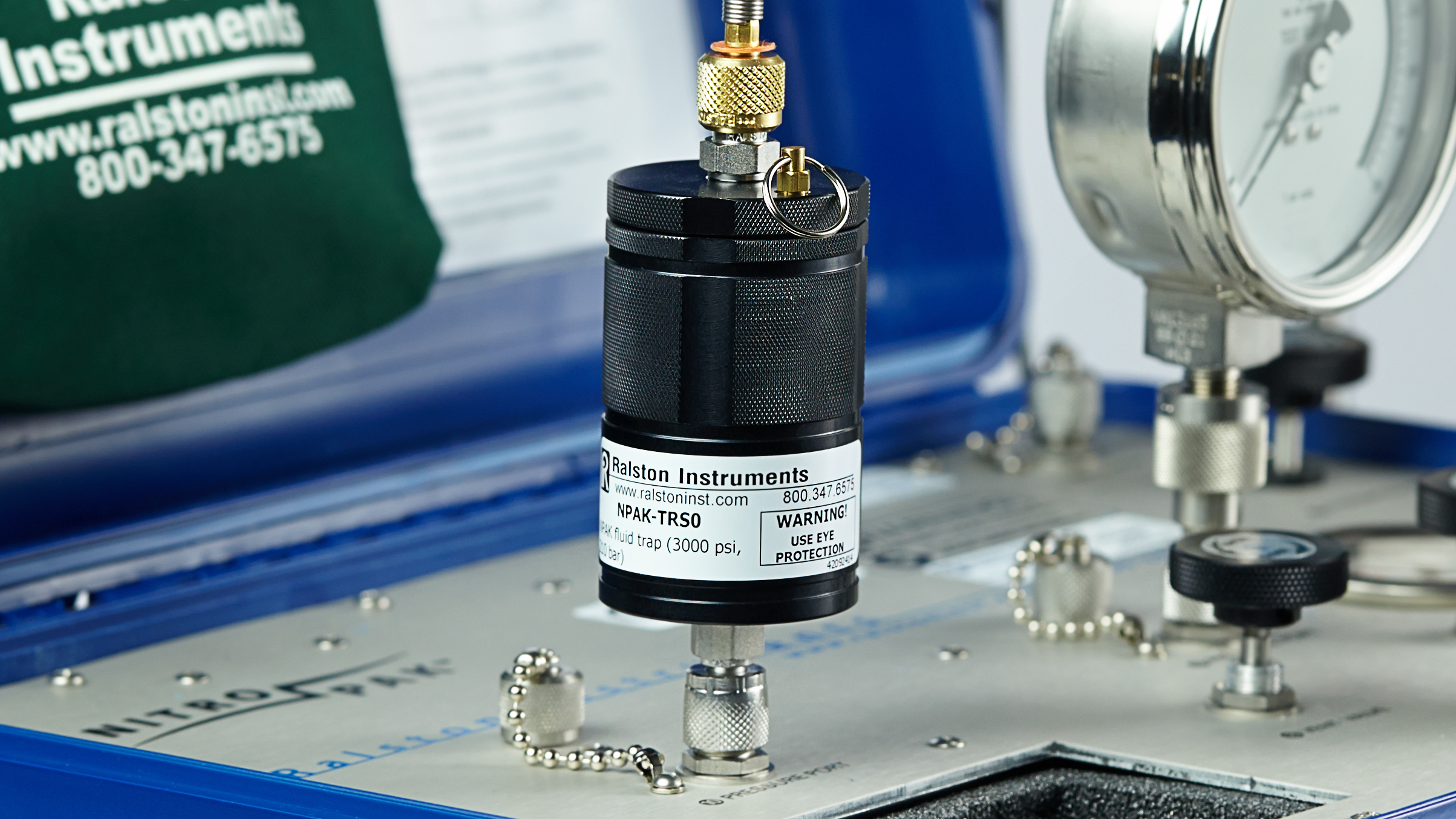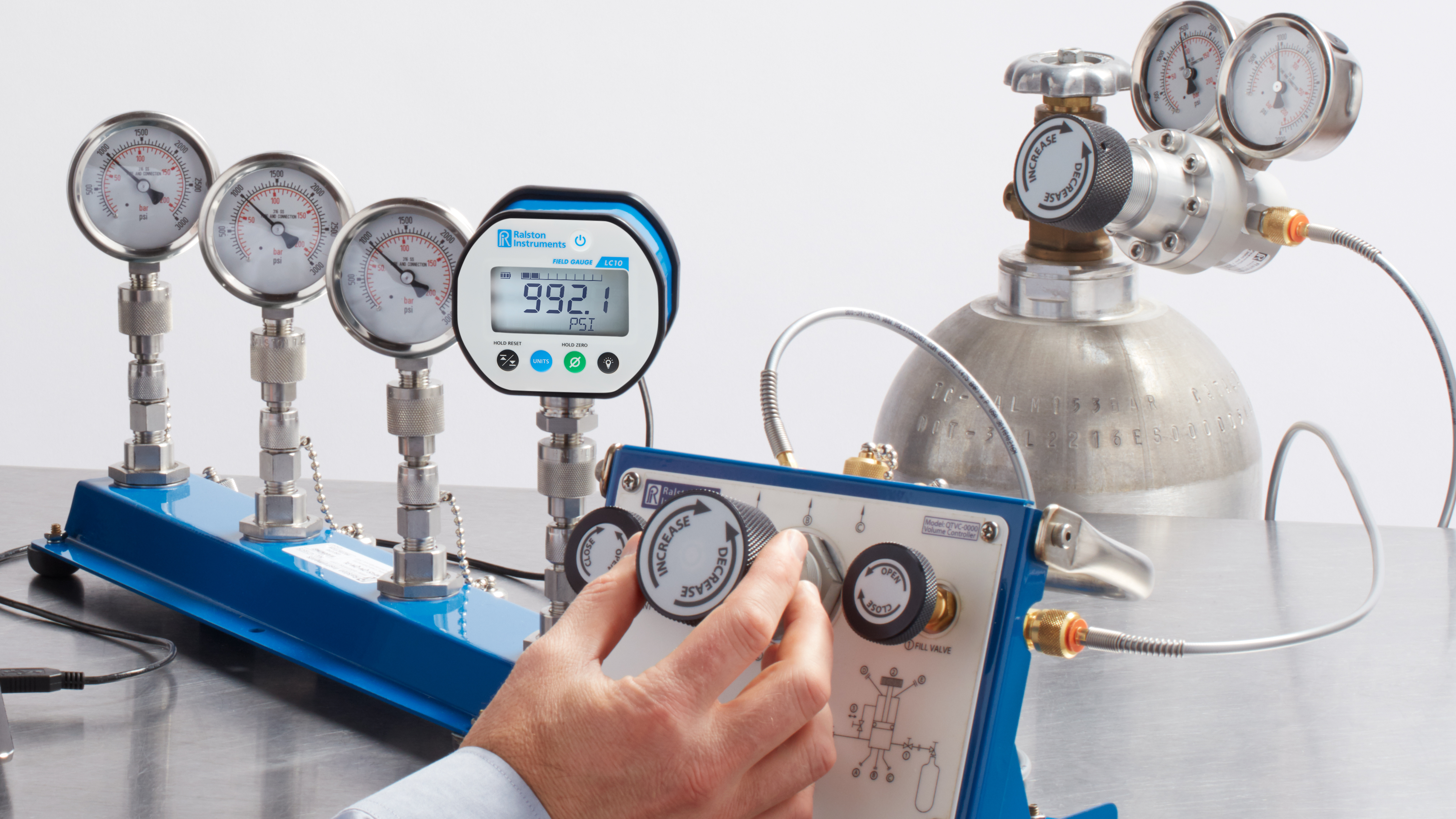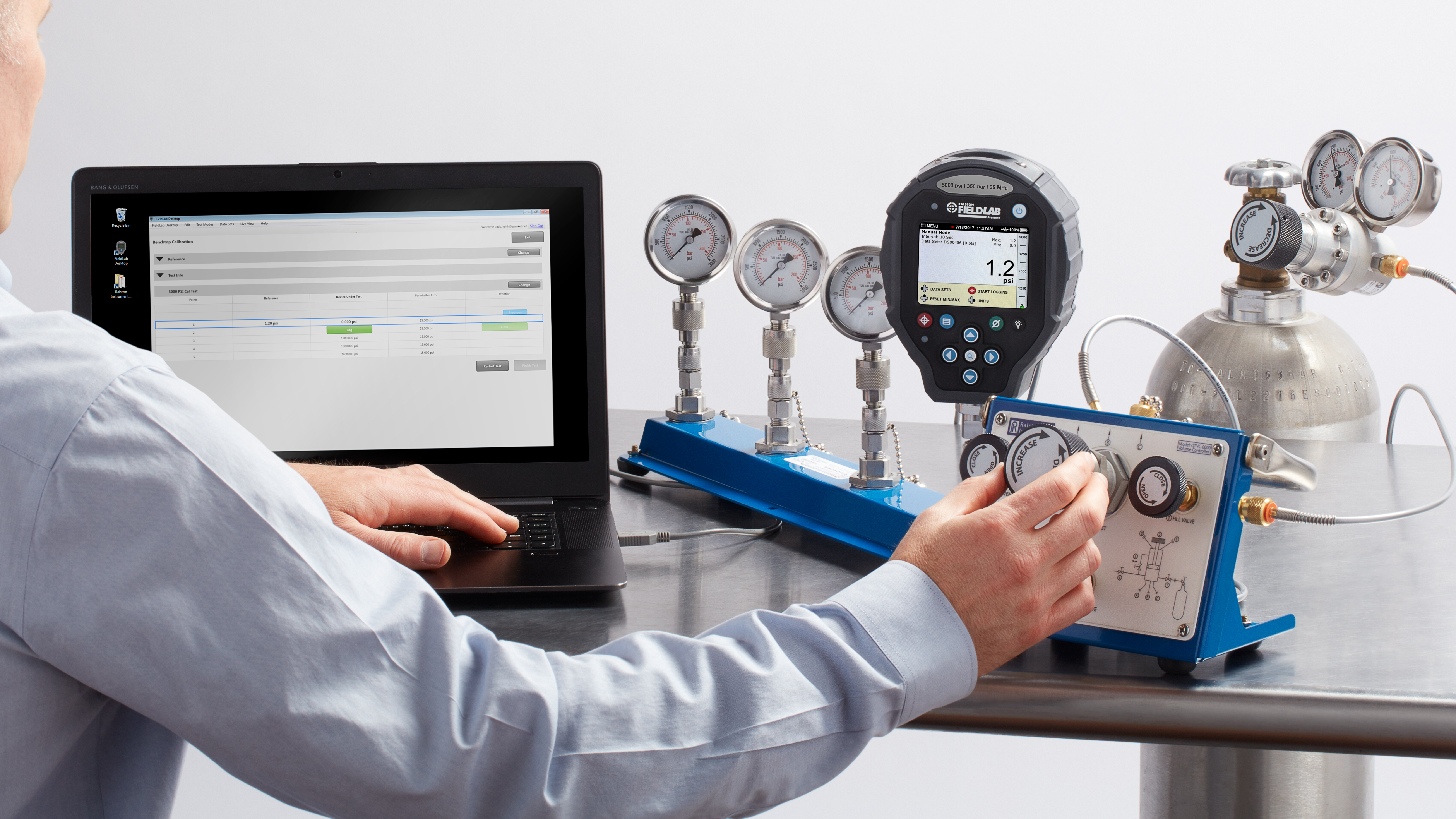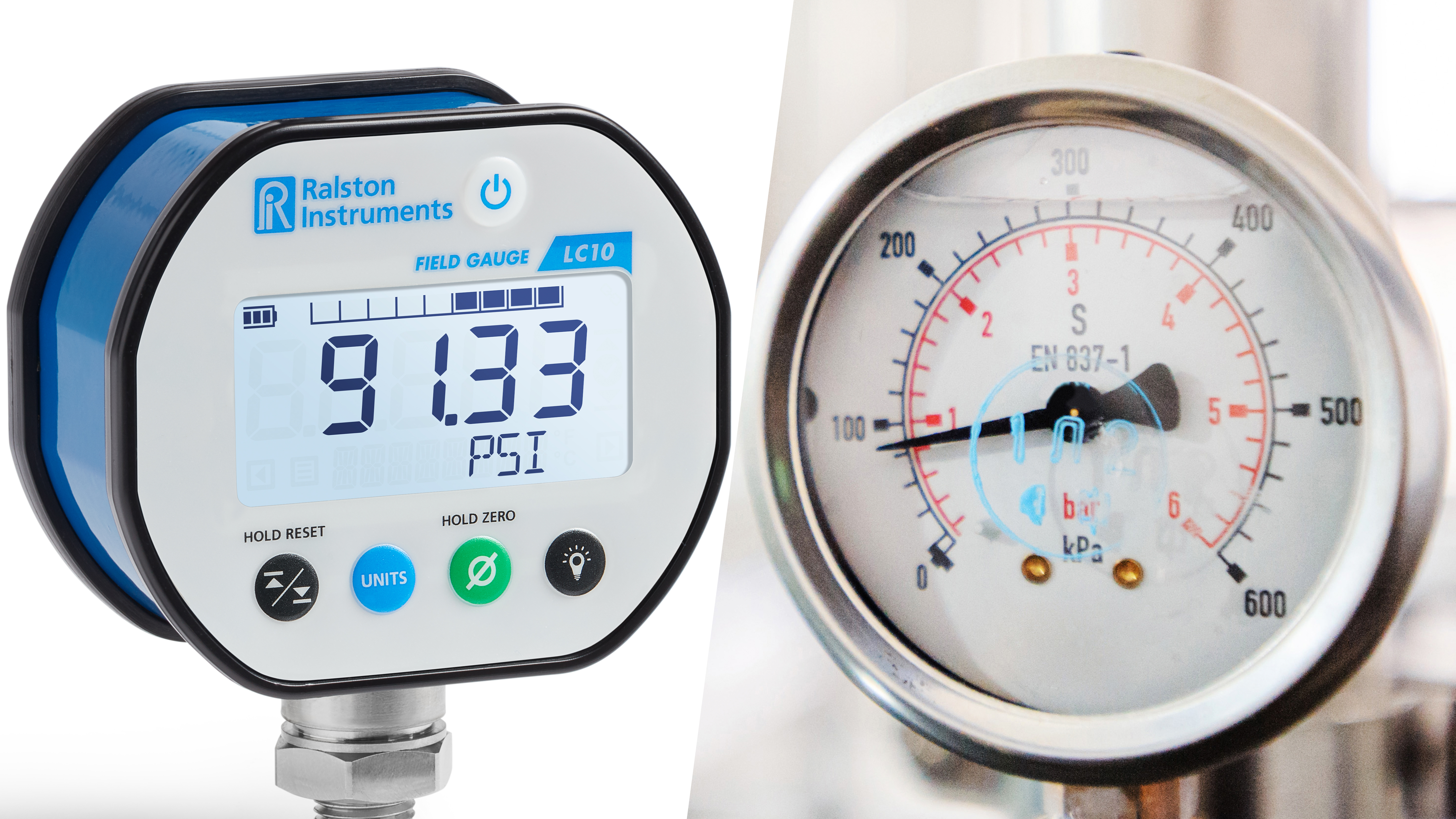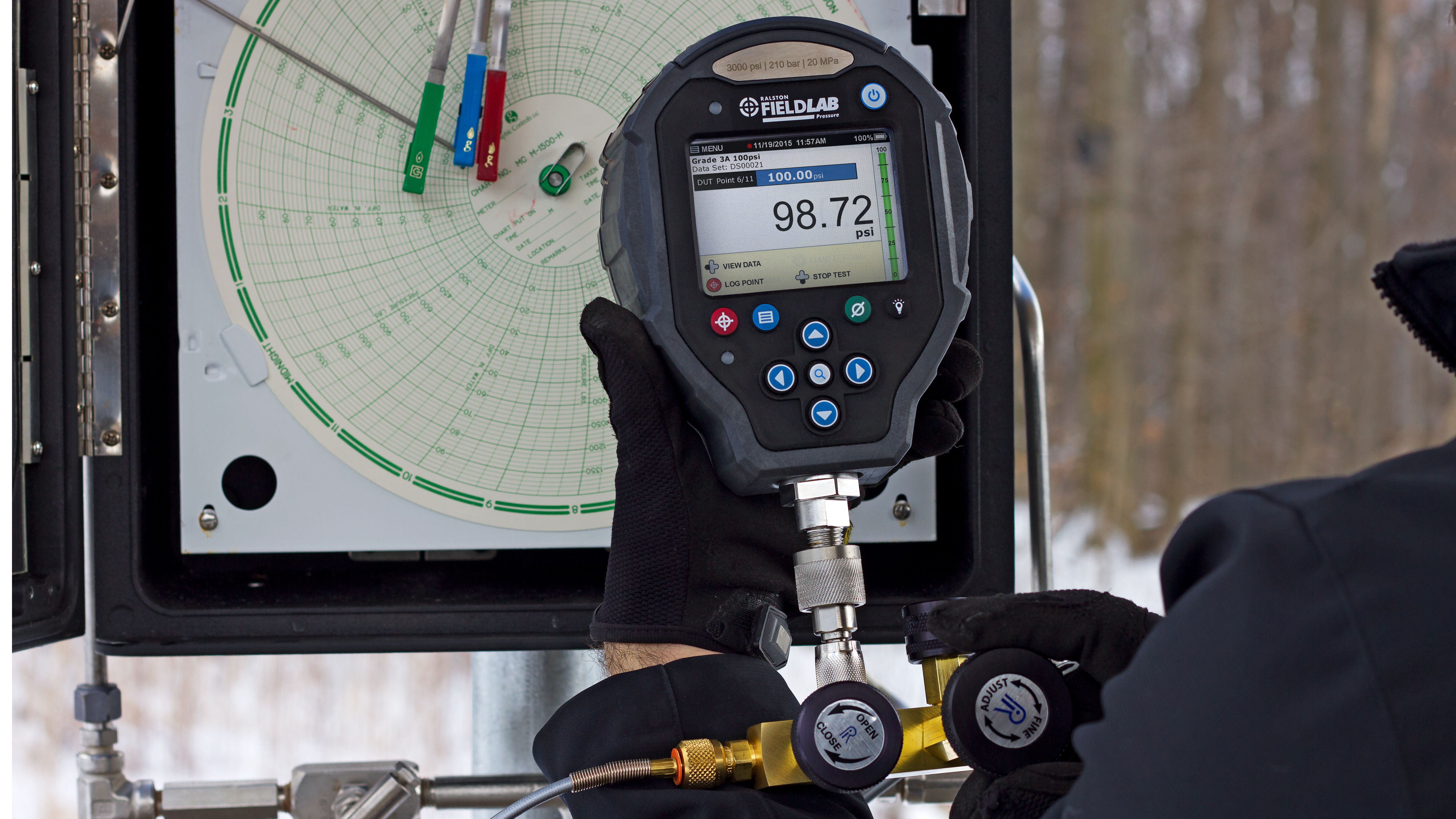Sand, dirt, natural gas liquids (NGLs), water and other liquids can be a serious problem when calibrating pressure instruments on oil or natural gas pipelines. When liquid is mixed in with gas it can contaminate pressure instrumentation and introduce measurement errors. This is particularly a problem when measuring low pressures or differential pressures as any liquid can increase measurement uncertainty. To help reduce measurement uncertainty and to prevent solids and liquids from contaminating your pressure instruments Ralston Instruments has introduced two helpful products.
Keep Liquids From Contaminating Compressed Gas Media
The High Pressure Liquid Trap allows the user to separate out any liquids that may come down a hose before they get into any pressure instruments. With a working pressure of 3000 psi / 210 bar the High Pressure Liquid Trap covers almost all gas applications. It has a quick-disconnect lid that allows you to empty any liquid out of it rapidly. It comes standard with Quick-test connections so attaching it to a Ralston Nitropak, Volume controller or calibrator is easy and does not require any thread sealant. There is also a Fluid Trap with standard NPT connections for use with any pressure calibration device on the market.
Filter Particles and Contaminates From Liquid Pressure Media
The Ralston In-line filter helps keep any particulate or contaminants out of their hoses and calibration equipment. Because often the vent valve is located back at the pressure source whenever a Device Under Test (DUT) is vented from the pressure source there is flow back towards the vent valve. If the DUT has liquid or contaminants in it these will then flow back to the pressure source. If an In-line filter is connected right at the DUT it filters out all particulates prior to them reaching the hoses or calibration equipment. It too has a sintered metal filter element that is easy to clean and reinstall.
